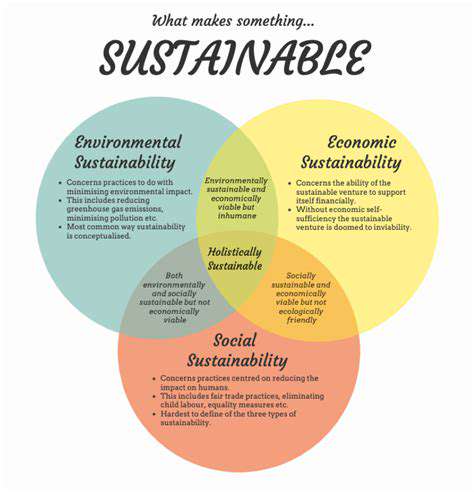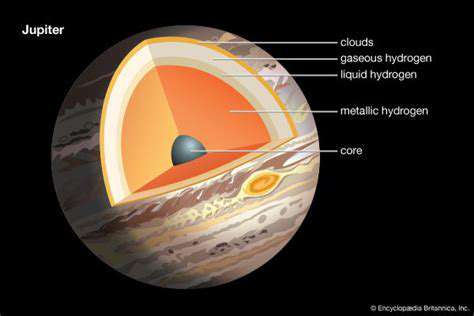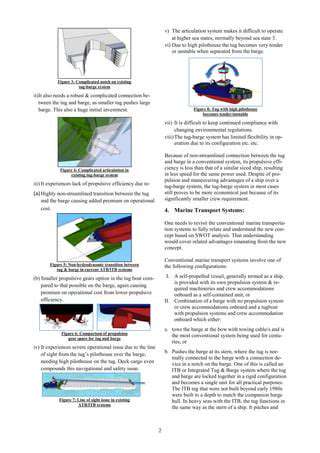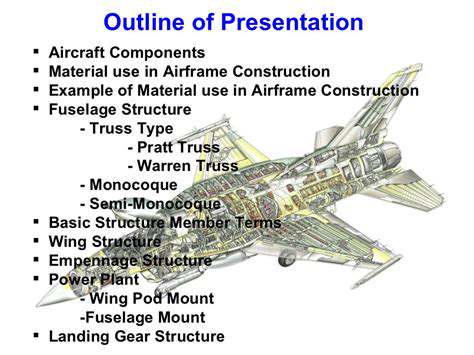Challenges in Material Science
Developing materials capable of withstanding the extreme temperatures and pressures encountered at supersonic speeds is a significant hurdle. Current aerospace materials struggle to maintain structural integrity under these conditions. This necessitates significant research and development into new alloys and composites that can endure the intense frictional heating and dynamic loads. Finding materials that are both strong and lightweight is crucial for achieving supersonic speeds without excessive weight penalties.
Aerodynamic Design Complexity
Designing aircraft capable of supersonic flight requires a sophisticated understanding of aerodynamics. The unique challenges posed by the compressible nature of air at supersonic speeds demand innovative approaches to shape, surface roughness, and control systems. Creating efficient and stable aerodynamic profiles that minimize drag and maximize lift is a complex process, requiring advanced computational fluid dynamics (CFD) simulations and extensive testing in wind tunnels.
Engine Design and Performance
Supersonic flight places immense demands on aircraft engines. Traditional jet engines often struggle to maintain efficiency and thrust at these speeds. Developing engines capable of generating sufficient thrust while maintaining fuel efficiency and reducing emissions is a critical challenge. This includes exploring new engine designs, combustion technologies, and advanced materials for turbine components.
Flight Control Systems
Maintaining stable and controlled flight at supersonic speeds requires sophisticated flight control systems. The dynamic nature of the airflow at these speeds introduces new challenges for pilot input interpretation and automatic control. Designing robust and reliable systems that can compensate for sudden changes in air pressure and temperature is essential for safety and efficiency.
Navigation and Guidance
Precise navigation and guidance systems are critical for safe supersonic flight. The higher speeds and altitudes introduce challenges to traditional navigation methods. Developing accurate and reliable systems to maintain course and altitude in the face of atmospheric variations and other environmental factors is a significant undertaking. This includes the integration of advanced sensor technologies and sophisticated algorithms.
Sound Barriers and Sonic Boom Mitigation
The sonic boom generated by supersonic aircraft is a significant environmental and societal concern. Reducing the intensity and minimizing the impact of sonic booms is crucial for the acceptance of supersonic travel. Research and development into innovative aircraft designs and flight control strategies that can minimize boom generation are essential for widespread adoption of supersonic commercial travel. Minimizing the disturbance to communities located near flight paths is a key concern.
Infrastructure and Regulations
Establishing the necessary infrastructure for supersonic flight, including airports, air traffic control systems, and maintenance facilities, presents a considerable logistical challenge. Developing stringent safety regulations and protocols for supersonic flight operations is crucial to ensure the safety of passengers and the public. These regulations must account for the unique risks associated with high-speed flight, including potential for catastrophic failure and unusual weather conditions at high altitudes.
Sonic Boom: A Controversial Companion of Supersonic Flight

Sonic Boom's Controversial Reception
The Sonic Boom video game series, released in the early 2010s, sparked immediate and passionate reactions from fans. Many felt the game drastically deviated from the established Sonic the Hedgehog formula, impacting the series' reputation negatively. The animation style, gameplay mechanics, and overall tone were significantly different from previous entries, leading to a large segment of the fanbase expressing strong disapproval.
This controversial reception stemmed from a perceived dilution of the beloved mascot's core attributes. Sonic Boom, for many, failed to capture the lightning-fast, adrenaline-pumping action that characterized the classic Sonic games. The change in gameplay style and character designs alienated a considerable portion of the fanbase and created a rift in the Sonic community.
Impact on Subsequent Sonic Games
The negative feedback surrounding Sonic Boom had a measurable impact on subsequent Sonic games. Developers seemed to take a more cautious approach, attempting to balance innovation with the need to satisfy long-time fans. The series' creators likely learned valuable lessons about the importance of maintaining a consistent identity and the potential repercussions of drastic changes.
The backlash highlighted the delicate balance between pushing creative boundaries and respecting the expectations of a loyal fanbase. This experience likely shaped subsequent game development decisions, influencing the direction and implementation of future Sonic titles.
Gameplay Mechanics and Innovation
Sonic Boom's gameplay mechanics were a significant point of contention. Some praised the new features, arguing they introduced fresh elements to the franchise. However, critics felt the changes were detrimental to the core gameplay loop, making the experience feel less engaging and more frustrating.
The game introduced new mechanics, such as platforming systems that relied more on environmental puzzles and less on the traditional speed-based platforming that had defined the series for decades. This shift in focus proved divisive and ultimately did not resonate with the majority of the fanbase.
Animation Style and Character Design
The animation style in Sonic Boom was another major source of contention. Many criticized the cartoonish aesthetics as being too far removed from the stylized yet grounded look of previous Sonic games. This change was seen as a departure from the series' established visual identity.
Fan Response and Community Division
The Sonic Boom games' release created a significant division within the Sonic fanbase. The negative reactions were vocal and widespread, highlighting the importance of fan sentiment in shaping the direction of game development. The controversy surrounding Sonic Boom undoubtedly left a mark on the series' development trajectory. The passionate responses from fans demonstrated the power of community and the impact of perceived betrayals of beloved franchises.
The events surrounding Sonic Boom served as a valuable case study in the delicate relationship between creators and consumers in the video game industry.
Environmental Concerns: Balancing Speed with Sustainability

Protecting Our Planet: A Crucial Task
Environmental concerns are no longer a niche topic; they are a global crisis demanding immediate and concerted action. The interconnectedness of ecosystems and human activities necessitates a profound shift in our approach to resource management and waste disposal. Ignoring these issues will have devastating consequences, impacting not only the environment but also the well-being of future generations.
The urgency of environmental protection cannot be overstated. The time for complacency is over; we must embrace sustainable practices and actively seek solutions to mitigate the damage already inflicted upon our planet. This requires a collective effort from governments, industries, and individuals alike.
Climate Change: A Looming Threat
Climate change, driven largely by human activities, is a significant environmental concern. Rising global temperatures are causing devastating impacts, from more frequent and intense extreme weather events to rising sea levels and disruptions to ecosystems.
The scientific evidence is undeniable: we are witnessing the consequences of our unsustainable practices, and the longer we delay action, the more severe the repercussions will become. Transitioning to cleaner energy sources and implementing sustainable agricultural practices are critical steps towards mitigating the effects of climate change.
Pollution: A Silent Killer
Air, water, and land pollution continue to pose a serious threat to human health and the environment. Industrial emissions, agricultural runoff, and plastic waste contribute significantly to pollution levels, impacting ecosystems and harming wildlife.
The consequences of pollution are far-reaching, affecting not only the environment but also human health and well-being. Implementing stricter regulations, promoting sustainable consumption patterns, and investing in innovative waste management technologies are crucial steps towards mitigating pollution levels.
Deforestation and Habitat Loss
Deforestation, driven by logging, agriculture, and urbanization, is leading to significant habitat loss and biodiversity decline. The destruction of forests disrupts ecosystems, impacting animal populations and contributing to climate change.
Resource Depletion: A Finite Future
The unsustainable consumption of natural resources, such as water, minerals, and timber, is depleting valuable reserves and disrupting ecosystems. Resource depletion is a significant environmental concern that requires immediate attention and the implementation of sustainable alternatives.
The continued extraction and use of resources at unsustainable rates will ultimately lead to shortages and economic instability. Promoting resource efficiency, adopting circular economy principles, and exploring alternative materials are vital steps in ensuring a sustainable future.
Overpopulation: A Strain on Resources
The growing global population exerts increasing pressure on natural resources and ecosystems. Overpopulation contributes to deforestation, pollution, and habitat loss, further compounding environmental challenges.
Addressing population growth through education, family planning, and sustainable development initiatives are crucial to ensuring a sustainable future. Balancing population needs with environmental capacity is a complex challenge that requires global cooperation and innovative solutions.
Sustainable Practices: A Path Forward
Adopting sustainable practices in all aspects of life is crucial to mitigating environmental concerns. This includes reducing carbon footprints, conserving water, minimizing waste, and promoting renewable energy sources.
Sustainable practices are not just about environmental protection; they are about building a more equitable and resilient future for all. Embracing sustainable consumption patterns, promoting eco-friendly technologies, and supporting policies that incentivize environmental responsibility are essential steps toward a healthier planet.











